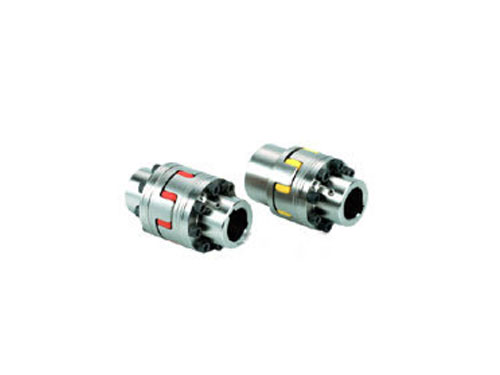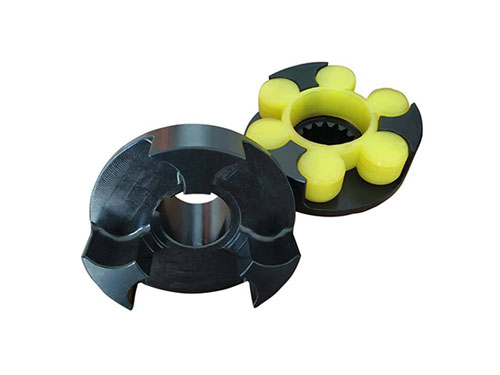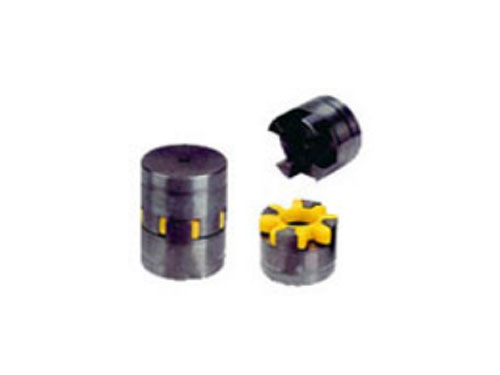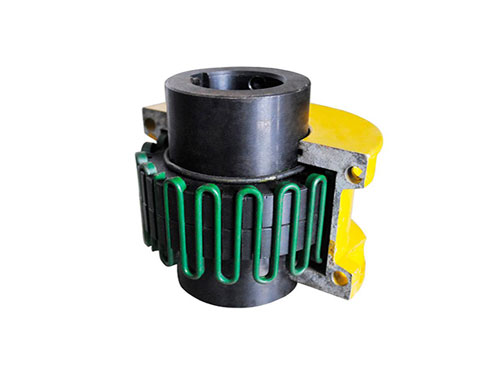 LMS type double flange type plum blossom elastic couplingLMS (formerly MLS) type-double-flange...
LMS type double flange type plum blossom elastic couplingLMS (formerly MLS) type-double-flange... LMZ-ⅡPlum-shaped elastic coupling with brake wheelLMZ-Ⅱ (formerly MLL-Ⅱ) type with brake wheel plum...
LMZ-ⅡPlum-shaped elastic coupling with brake wheelLMZ-Ⅱ (formerly MLL-Ⅱ) type with brake wheel plum... LXD type single flange star elastic couplingLXD type single flange star elastic coupling is...
LXD type single flange star elastic couplingLXD type single flange star elastic coupling is... JSB type axial mounting couplingThe general material of J-type axial installation coupling...
JSB type axial mounting couplingThe general material of J-type axial installation coupling... Expansion coupling sleeveCompared with the key connection, the expansion sleeve connection has...
Expansion coupling sleeveCompared with the key connection, the expansion sleeve connection has...Material and working characteristics of elastic pin coupling
The axial compensation value of the elastic pin coupling is different according to the size of the outer diameter. Generally, the compensation value of the coupling with an outer diameter of 200 or less is used at 3mm, and the coupling with an outer diameter of 200 or more The axial compensation of the shaft device is above 3-8mm.The difference from the original standard is that the thermoplastic rubber is eliminated, and the hardness and material of the elastic element are adjusted. The mass and moment of inertia of the coupling are calculated according to the material of cast steel, small shaft hole and L.A plurality of pins made of non-metallic materials are placed in the holes of the flanges of the two halves of the coupling to realize a coupling that is elastically connected between the two halves of the coupling.When the elastic pin coupling is working, the coupling rotates at a high speed. The elastic pin coupling causes stress due to inertial force and internal pressure. It is also simplified into a cylinder, and a small piece of abed is taken on its cross-section for analysis. .Its deformed geometric relationship and the expression of the generalized Hooke's law are the same as in the static state.Shearing elastic elements, poor performance, only suitable for low-speed transmission shafts, not suitable for high-quality requirements, such as lifting transmission shaft mechanical lifting mechanism correspondingly cannot be used, not suitable for low speed to heavy, strong The drive shaft with greater impact and vibration, the radial and angular offset plus the working conditions and the installation of the lower shaft system should not be selected, and the varieties are eliminated.
The elastic pin coupling should be pushed in according to the required amount when it is reassembled, and it should not be too large.The pressure rise of the high-pressure oil pump should be steady and slow, and overpressure is strictly prohibited.Measure and compare the size of the removed coupling and the shaft head embedded in the coupling wheel during maintenance.The elastic pin coupling just uses the dynamic and static method to establish the balance equation when adding an inertial force p∞r·rdOd in the direction of r. The amount of advancement is a very important data when the coupling is overhauled. It is the torque transmitted by the coupling. Foundation.
XNUMX. Material and working characteristics of elastic pin coupling
1. Use a number of pins made of non-metal elastic materials to be placed in the flange holes of the two halves of the coupling, and the two halves of the coupling are connected by the pins. The coupling has a simple structure, easy to manufacture, and easy to assemble and disassemble The elastic element is more convenient, no need to move the coupling halves.
2. It is suitable for medium-speed transmission shafts with very low requirements, and is not suitable for working conditions with high workability requirements, because the material of the elastic element (column) is generally nylon, which has the ability to slightly compensate for the offset of the two axes. Shears during work and poor workability.
3. The elastic pin coupling has a relatively large structure, simple and reasonable, convenient maintenance, symmetrical and interchangeable on both sides, long life, and allows greater axial movement.
Second, the stiffness requirements and displacement compensation characteristics of the elastic pin coupling
1. The elastic pin coupling is a torsionally loaded rubber component. The rubber component can be designed as a single row or multiple rows. Each rubber component has a variety of standard stiffnesses to choose from, which can achieve a large range of torsional vibration calculations. Stiffness requirements.
2. The main purpose of using highly elastic pin couplings in ship power systems is to transmit power and torque, compensate for radial, axial and angular alignment errors, and compensate for oscillations of rotational momentum.Adjust the natural frequency of the system.
3. The high elasticity pin coupling has the characteristics of light weight, easy installation, large displacement compensation in all directions, large damping, and vibration absorption capability, which can well protect the main coupling, gear box and shaft system.
4. High-elasticity couplings are used for the elastic connection of the master-slave shafting of power machinery when the speed is too high.Circumferentially aligned elastic drum-shaped gear couplings. The spiral ring-shaped elastic body of the elastic element formed by the multi-stranded steel wire stranded by the metal splint forms the annular free deformation space between the master and slave hubs of the coupling. The master-slave hub of the shaft device forms an elastic displacement compensation feature in the axial, radial, and shaft inclination directions through an annular free deformation space.
5. It is suitable for shafting connection of various power devices driven by marine main and auxiliary engines, internal combustion engines, diesel engines, electric couplings and hydraulic motors.The torsional vibration test was carried out on board the ship. From the test results, the torsional vibration characteristics of the coupling were small relative to the allowable value, but the coupling was continuously damaged.